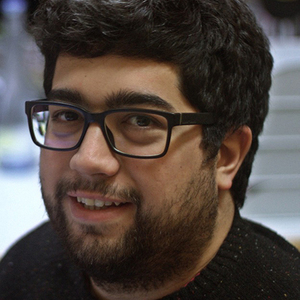Enhanced Flexible Mold Lifetime for Roll‐to‐Roll Scaled‐Up Manufacturing of Adhesive Complex Microstructures
Bioinspired Microstructured Adhesives with Facile and Fast Switchability for Part Manipulation in Dry and Wet Conditions
Smart Materials for manipulation and actuation of small-scale structures
3D nanofabrication of various materials for advanced multifunctional microrobots
Liquid Crystal Mesophase of Supercooled Liquid Gallium And Eutectic Gallium–Indium
Machine Learning-Based Pull-off and Shear Optimal Adhesive Microstructures
Information entropy to detect order in self-organizing systems
Individual and collective manipulation of multifunctional bimodal droplets in three dimensions
Microrobot collectives with reconfigurable morphologies and functions
Self-organization in heterogeneous and non-reciprocal regime
Biomimetic Emulsion Systems
Giant Unilamellar Vesicles for Designing Cell-like Microrobots
Bioinspired self-assembled colloidal collectives drifting in three dimensions underwater
Liquid metal (gallium) reversible adhesion

The ability of liquid metals, such as gallium (Ga), to deform at low temperatures has made them attractive for future soft devices. Although a few studies have been conducted on the wetting behavior of Ga-based liquid metals, the interfacial adhesion mechanics of a liquid Ga droplet when its oxide skin comes into contact with a rigid substrate are not fully understood. The native gallium-oxide nanofilm encapsulating liquid Ga provides mechanical stability by preventing the flow of the liquid metal. In this work, we discover how a crumpled oxide skin a few nanometers thick behaves akin to a highly bendable elastic nanofilm under ambient conditions. Upon compression, a wrinkling instability emerges at the contact interface to relieve the applied stress. As the load is further increased, radial wrinkles evolve, and eventually, the oxide nanofilm ruptures. The observed wrinkling closely resembles the instability experienced by nanofilms under axisymmetric loading, thus providing further insights into the behaviors of elastic nanofilms. Through our analysis, we are capable of predicting the contact geometry and subsequent adhesion effectivity for a given preload. Additionally, we can predict when the oxide nanofilm ruptures and leaves residue on the surface, which may further facilitate cost-effective room-temperature 2D patterning of liquid Ga for future semiconductor applications. The results suggest a new platform for studying wrinkling of elastic nanofilms under external stimuli, which has implications in morphogenesis, interfacial-crack trapping to enhance adhesion, patterning, and functional optical and electronic materials. Understanding the behavior of droplets encapsulated in thin membranes could also help improve food processing quality, cosmetics, and drugs.
Members
Publications






